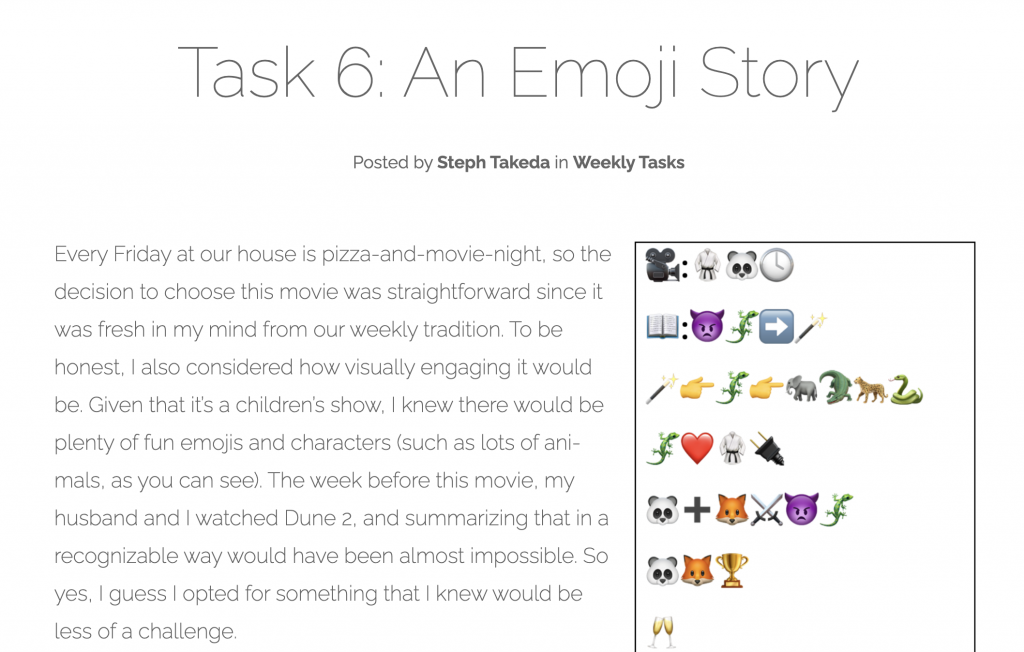It is so amazing that we can decipher and make sense of symbols/emojis and make connections with what we see almost instantaneously. I was able to look at Stephanie’s emoji story and made sense of it. It took a moment to register all the animals/characters and elements, but I was able to take a guess and saw the answer revealed in the comments. Similar to Stephanie I approached this task thinking about what makes the most sense to myself and others. I too started with the title and used relevant (at least I thought they were) emojis to the best of my abilities. Thinking and questioning:
- Does this make sense and easy for others to understand?
- What are some of the emojis and icons I can use to fully express the story?
- How do I explicitly represent and display the plot or important parts of the movie to my readers?
- Is this too complicated?
If the individuals have never watched or heard of the movie, it would be difficult for them to guess because they would not have the prior knowledge to make the connection. In addition, Bolter (2001) emphasizes [that] pictures lack narrative power because each picture element encompasses a broad range of verbal meanings, it’s hard to get specifics because each element can signify too much. This illustrates that there is so much more beyond simply looking at pictures and emojis.
This task provided us the opportunity and challenged us to be creative in fulfilling our goal of creating an emoji story. However, the significant takeaway here is to value and understand that we can express so much more through verbal and written forms of communication.
Reference
Bolter, J. (2001). The breakout of the visual, Writing space: Computers, hypertext, and the remediation of print (pp. 46-68) (2nd ed.). Lawrence Erlbaum Associates.
